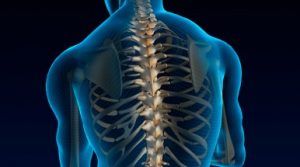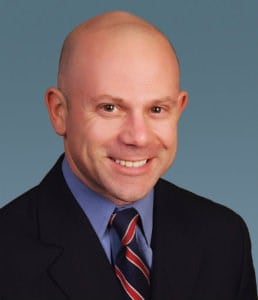Vertebral Cement Augmentation in the Human Spine
- What Are the Benefits of Vertebral Cement Augmentation?
- How Is Vertebral Cement Augmentation Performed?
- What Makes the Orlando Orthopaedic Spine Center Unique?
Vertebral cement augmentation is a relatively new treatment for vertebral fractures in the spine wherein “bone cement” is injected directly into a fractured vertebra with the intention of relieving back pain and getting patients back on their feet as soon as possible.
When a patient experiences a vertebral compression fracture (VCF) there are several treatment options available to restore proper spine functioning. After a patient’s first VCF the risk of subsequent breaks increases five-fold and after two fractures the risk of a third is 12-fold; 75-fold if the patient has low bone mass.
That’s why choosing the proper treatment is of the utmost importance. As distressing as the numbers may sound there are options for minimally-invasive treatment, including the popular vertebroplasty, also known as vertebral cement augmentation.
“Old time orthopaedics said to put patients experiencing back pain in a brace and let them heal, and even though the treatment was cumbersome it often helped,” says Steven E. Weber, D.O., one of four fellowship-trained spine and neck specialists at the Spine Center at Orlando Orthopaedic Center. “But today there are far better options and a vertebroplasty is one of them. This is one of the few options where results are 99 percent positive.”
Dr. Weber says if they aren’t getting better after bracing for a few weeks, cementing the bone is a quick and easy procedure. “The person that couldn’t walk or move well even with a brace can now get into rehab and recover,” he says.
What Are the Benefits of Vertebral Cement Augmentation?
One of the main advantages of vertebral cement augmentation is the minimally-invasive nature of the procedure compared to other methods.
“Vertebroplasty requires only a small injection at the site of the pain,” says Dr. Weber. “In fact, most patients that undergo vertebral cement augmentation can walk out of the doctor’s office that day and can be back to work the next. It’s really amazing when you compare it to the way it used to be done.”
Vertebroplasty is beneficial to patients in many ways. One of the main benefits, aside from a faster healing time and less pain, is cosmetically – the procedure requires very small incisions which means minimal scarring, swelling, tissue disruption and healing time.
How Is Vertebral Cement Augmentation Performed?
The expertly trained and board certified team at Orlando Orthopaedic Center uses the latest technology to ensure patients who receive the vertebral cement augmentation surgery get the best treatment available. Utilizing a new cement delivery system, Dr. Weber and his team can control the viscosity of the dough-like bone cement to ensure the procedure is as successful as possible in providing relief. The team even uses state-of-the-art cement designed to stay precisely where it is injected to avoid the risk of unwanted complications found in other products.
“If you inject something really runny into the bloodstream, it can get taken away and deposited into the vascular system or the lungs. This cement isn’t going anywhere except into that bone where it’s supposed to,” says Dr. Weber.
In the past, patients would undergo a major back surgery where rods would be used to stabilize the spine. Recovery of this painful and invasive surgery could take up to six weeks. This is no longer the case – patients are now up and walking later that day rather than a week after surgery.
What Makes the Orlando Orthopaedic Spine Center Unique?

Benefits of Vertebral Cement Augmentation
“Myself, my fellow spine specialists and our staff, use the latest technology and highest level of care when interacting with patients,” says Dr. Weber. “We know it can be a scary time for them, so we do whatever we can to make the process as easy, relatable and pain-free as possible with surgery as a last option to provide relief.”
Dr. Weber specializes in spinal reconstruction and general orthopaedic surgery at the center. He earned his medical degree from Michigan State University, and completed an internship and an Orthopaedic residency there as well. He then became an associate clinical instructor for the department of orthopaedic surgery and rehabilitation, completing a reconstructive spinal surgery fellowship with the University of Florida. Dr. Weber has presented much of his orthopaedic research at national meetings. He teaches the latest minimally invasive techniques to other surgeons at universities throughout the country.
Dr. Weber says more than 700,000 vertebral compression fractures occur every year, which is more than the number of both hip and wrist fractures combined. Approximately 150,000 people in the United States are hospitalized every year due to pain and medical management related to vertebral compression fractures resulting in costs in excess of $1.6 billion annually. “It’s an important problem and it’s becoming worse,” he says. “It’s going to be an epidemic within the next 10 years.”
Still, as modern medicine continues to advance, more and more treatment options will become available for patients and offices like Orlando Orthopaedic Center will be there to help patients experience relief quickly, safely and effectively.



